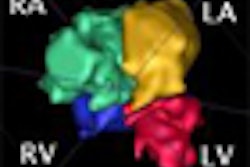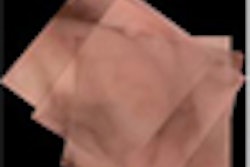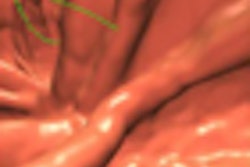Sunday, November 29 | 10:45 a.m.-10:55 a.m. | SSA19-01 | Room S403B
This University of Michigan scientific paper presentation will discuss the feasibility of using computer-aided detection (CAD) software for automatically detecting noncalcified atherosclerotic plaques (NCPs) on contrast-enhanced coronary CT angiography (CCTA) studies.These studies are difficult to interpret, with reconstruction and thin-slice acquisition resulting in more than 1,000 CT slices per exam. Even with sophisticated visualization software and analysis tools on clinical workstations, it's still time-consuming to manually select the vessels and have the software reformat and display them for interpretation, said presenter Berkman Sahiner, Ph.D., of the University of Michigan in Ann Arbor.
While there are a variety of tools able to assist radiologists in reading CCTA images, they all require the radiologist to identify the individual vessel to be analyzed.
"As such, if the radiologist does not suspect that NCP may be present in a given vessel, the vessel may not be marked for further analysis using the visualization tools and, thus, may be missed," Sahiner said. "Since these tools do not perform automatic detection of the NCP locations, they do not serve the purpose of a second reader as a [CAD] system."
In response, the institution's Computer-Aided Diagnostic Research Laboratory began to develop an algorithm that aims to automatically detect noncalcified atherosclerotic plaques throughout the entire coronary tree in a CCTA study and alert the radiologist. To facilitate inspection by the radiologist, these locations may also be used to automatically initiate multiplanar reformatted (MPR) display and analysis of the suspected vessel segments, Sahiner said.
Sahiner will present the preliminary design and performance of the algorithm on a limited dataset of 14 CCTA studies with 21 noncalcified atherosclerotic plaque lesions. The research team found the prescreening method could achieve high sensitivity, while a feature analysis technique was able to reduce false positives with only a relatively minor reduction in specificity, he said.
The study demonstrates the feasibility of the CAD algorithm for detecting noncalcified atherosclerotic plaques. Further research is now encouraged in this area, Sahiner said.
"If an accurate, efficient, and consistent [CAD] system can be developed to assist radiologists in detecting and quantifying NCPs, it may increase the efficacy of CCTA for coronary artery disease and may accelerate research to explore wider applications of this noninvasive procedure and improve patient care," Sahiner told AuntMinnie.com.




















